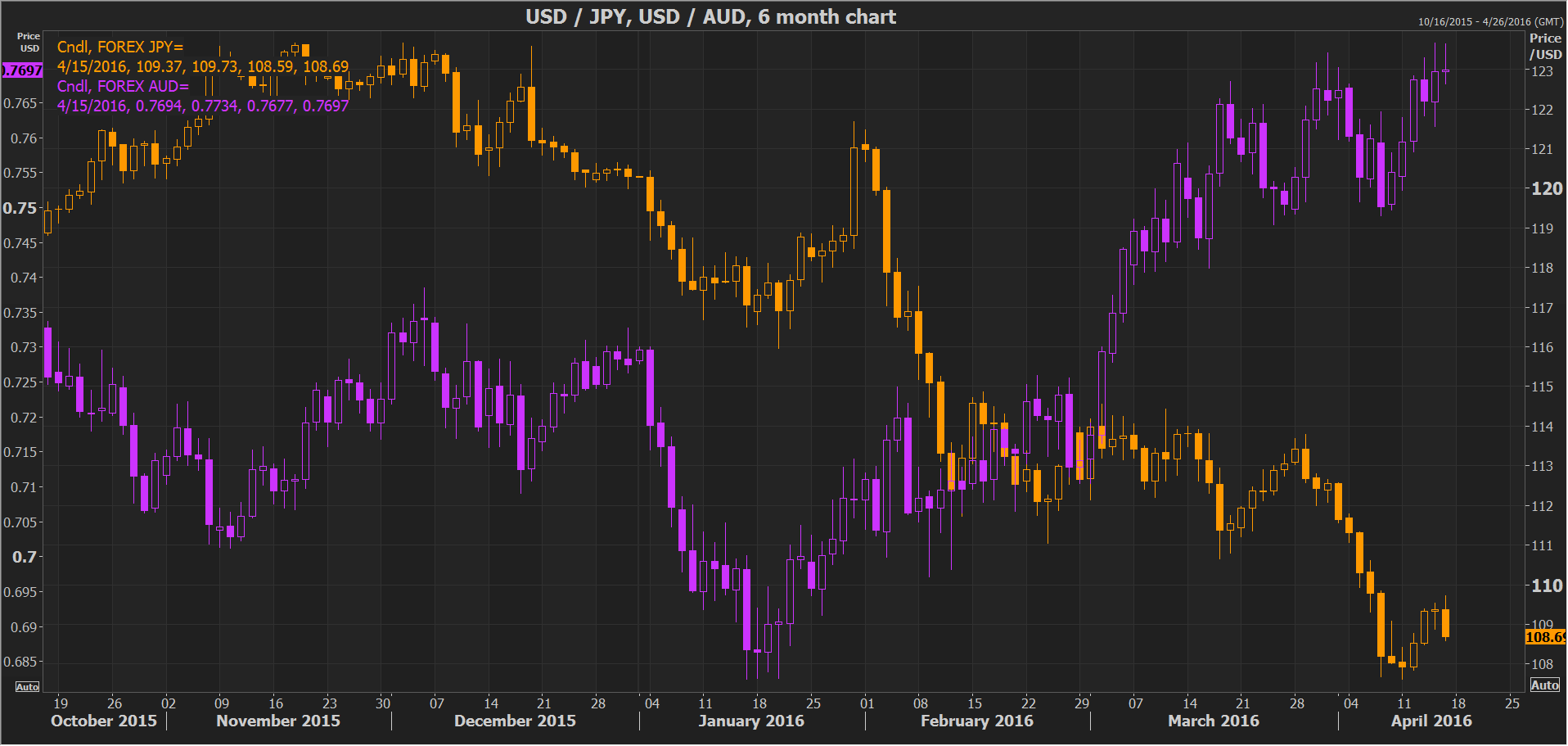One interesting feature of the past few days has been the strength in commodity currencies. The Australian dollar, the New Zealand dollar and the Canadian dollar have been some of the best performers of the past weeks, in the absence of any significant action in major pairs.
The reason has maybe more to do with the oil price. Oil is managing to hold on to the $40 level for now and this is lending support to these currencies – particularly the Canadian dollar. There are expectations that major oil producers will reach some sort of agreement when they meet in Doha, Qatar on Sunday, April 17. This – together with indications that private sector production in countries such as the United States is falling – was the key reason for the rebound in oil prices, from admittedly depressed levels.
The commodity currencies have also benefited from the return of risk appetite. Particularly high-yielding currencies such as the aussie and the kiwi do well when there is positive mood in global financial markets. Therefore, in the short-run and given that other fundamentals don’t change much, oil and risk appetite could continue to dictate the direction of commodity currencies.
There were also some positive news out of China and markets appear much less worried about what is happening there compared to the beginning of the year. The fact that all the Chinese data came in line or better-than-expectations reinforced the market’s views that China’s economy will manage to cope with its challenges. The more positive view might also have been influenced by the caution displayed by monetary authorities around the world with respect to global economic developments; meaning that central banks around the world would follow more stimulative policies.
The mystery of the rising yen
Analysts and traders have yet to come up with a convincing explanation why the yen has been the strongest performing major currency so far year-to-date. While the Bank of Japan is running a super-loose monetary policy and running the largest Quantitative Easing program in the world (as a percent of GDP), the yen has rallied more than 10% versus the US dollar, as the Fed has stopped pumping money into the economy and is now thinking when to next raise interest rates.
Furthermore, it might have made sense for the yen to be stronger when markets were under stress and in periods of financial turbulence; fulfilling its traditional role as a safe haven. However, stock markets have been rallying strongly and they have made up most of the losses which were registered at the beginning of the year. The yen did not seem to notice the stock market recovery that took place and the Nikkei has underperformed the global rally as the Japanese currency strengthened. This behavior may create some doubts about whether the yen will be able to fulfill its role as a safe haven when financial turbulence rears its head again in the future.
Alternatively, seasonal flow of funds and repatriation of assets by Japanese investors has also been suggested as a reason. Japanese corporates, many being major exporters, often shift around funds, while also needing foreign currency for importing raw materials. This could have been a possible reason but it is difficult to imagine such a large move being due exclusively to these reasons. In any case, such flows will probably reverse at some point.
Finally, there is another justification that could help to explain some of the move. The yen has merely retraced its sudden slide from the 108-109 level it was at before the BoJ’s expansion of quantitative easing back in October of 2014. USD/JPY inability to break to significant new highs after late 2014/ early 2015, might have indicated an overdue reaction to the yen’s decline that started in 2012. Dollar / yen rose from 78 yen to 125 in 2015 – a huge and violent move that was due to Bank of Japan’s aggressive monetary stimulus and hopes about the economic reforms of the country’s new Prime Minister Shinzo Abe (Abenomics). That move probably already priced in a lot of monetary action by the BoJ and in purchasing power terms the yen was quite cheap at 125. The yen is more fairly valued right now and it will probably take ‘unexpectedly’ aggressive monetary stimulus by the BoJ to drive it back down. The fact that there is little appetite for forex intervention among Japan’s G7 partners is also supportive of the yen.

